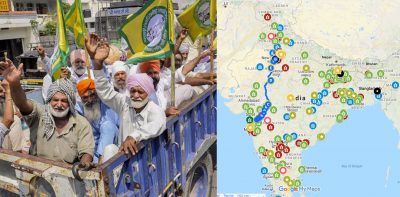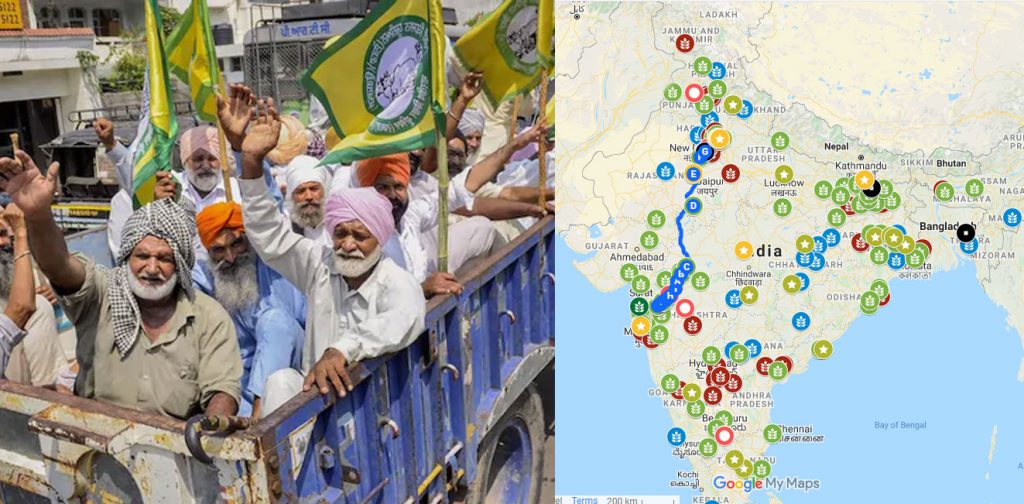Mass Protests by Indian Farmers
Mere days after the map was first introduced by SabrangIndia, farmers engaged in more versatile dharnas (sit-ins) to condemn the three laws passed by the government

Over the last 22 days of 2020, farmers’ struggle jotted down 28 more protests on India’s map. These are just the bare facts as the final moments of the 2020 resistance included Vehicle Jathas, indefinite strikes and solidarity protests from the grassroot-level workers of India. In all, farmers have been protesting for 37 days at the borders of Delhi, the Indian capital while the countrywide protest has built up over months.
India’s farmers have lived up to the people’s history of this country by once again uniting peasants in a single movement against the oppressive policies of an authoritarian and majoritarian regime. Remember the three laws that farmers have been unitedly protesting were pushed through Parliament without debate with the primary stake-holders: the famers. From allegations of Khalistani intentions to political theories, to Maoist infiltration to the insult of being called the protest of a few, India’s Annadaatas (food growers) have persevered through it all.
On December 19, Sabrangindia brought you the first map. This updated Naqsha (Map) further breaks down this resolve of the Indian farmer, by further charting the movement’s activity into monthly phases of September protests (blue), November protests (red), December protests (green) and January 2021 protests (dark green) to portray the steady and upward growth of farmers’ unrest.
Source: Sabrangindia
Separate categories of ‘Solidarity statements’ (star-marked), ‘Bharat Bandh (December 8, 2020)’ (circled), ‘Workers for Farmers’ (green star-marked) provide a unique view as to how non-agricultural elements of Indian society have pitched in for the farmers’ struggle.
Routes of widespread jathas have also been accordingly mapped.
*
Note to readers: please click the share buttons above or below. Forward this article to your email lists. Crosspost on your blog site, internet forums. etc.


